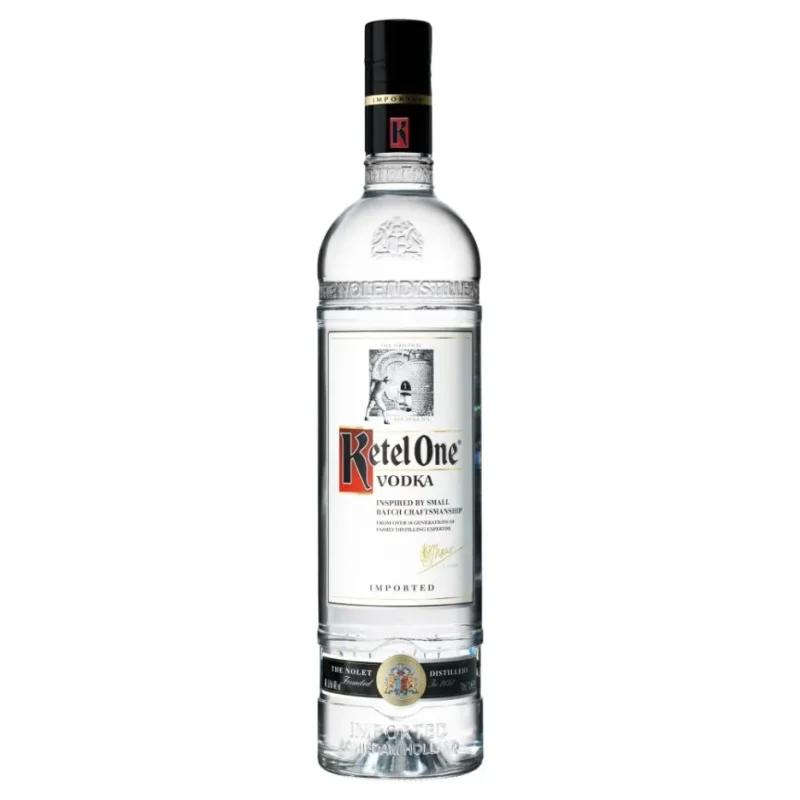Ever wondered what magic happens when you combine humble potatoes with a dash of science and a sprinkle of old-world charm? Welcome to your ultimate guide on how to make vodka from potato—a fun, cheeky journey that turns your spuds into pure, gleaming liquid gold. Whether you’re a weekend warrior looking to experiment in the kitchen, a curious millennial who’s tired of the same old craft cocktails, or a Gen Z enthusiast ready to break the mold with something homemade and a little bit rebellious, you’re in the right place. Grab your favorite potato (yes, that earthy, starchy superstar), roll up your sleeves, and let’s dive into the wonderfully quirky world of potato vodka crafting!
How To Make Vodka From Potato Table of Contents
What’s the Buzz About Potato Vodka?
The Science Behind Transforming Potatoes into Pure Liquid Gold
Step-by-Step Process to Make Potato Vodka
Troubleshooting and Pro Tips: Maximizing Your Vodka Masterpiece
Safety and Legal Considerations: Keeping It Cool and Compliant
The Art and Soul of Home-Distilled Potato Vodka
Resources and Community Support: Your Next Steps
Frequently Asked Questions About Making Vodka From Potato
A Toast to Your Homemade Spirit: Embrace the Journey
Looking For The Best Vodka? You'll Love These Vodka Guides...
What’s the Buzz About Potato Vodka?
Vodka has long been the spirit of choice for the daring, the creative, and the downright curious. When you think of vodka, you might picture gleaming bottles from famous distilleries or even quirky cocktail recipes served at midnight parties. But did you know that some of the best vodka can come from the humble potato?
While traditional vodka is often made from corn, wheat, or rye, potato vodka offers a unique twist. Its creamy texture, slightly earthy flavor, and smooth finish make it a standout addition to your DIY drink repertoire. Plus, making your own vodka from potato is more than just a science experiment—it’s a creative endeavor that channels centuries of distillation tradition with a modern, homemade spin.
Embracing the art of potato vodka is as much about reclaiming a storied history as it is about having fun in your own kitchen laboratory. From the rustic farms of Eastern Europe to your modern countertop, this guide will serve as your passport to exploring the alchemy of turning spuds into a premium spirit.
The Science Behind Transforming Potatoes into Pure Liquid Gold
At its core, the process of making vodka from potato is a beautiful marriage of chemistry and art. It involves converting the starch in potatoes into sugars, fermenting those sugars into alcohol, and then distilling that alcohol until it becomes crystal clear vodka. In other words, you’re transforming something as ordinary as a potato into a powerhouse of flavor and potential.
Here’s how it works: Potatoes are naturally rich in starch—a complex carbohydrate that serves as a storehouse of energy. Through a process called saccharification, enzymes break down these starches into simpler sugars. These sugars then become the fuel for yeast during fermentation, a critical phase where yeast turns sugar into alcohol. Finally, distillation extracts and purifies the alcohol from the mix, yielding a spirit that’s ready to be enjoyed neat, on the rocks, or as the base for your favorite cocktail.
Best Budget Vodkas Ranked
The science is fascinating because it touches every element of biochemistry and physics, yet the process remains accessible enough that you can try it at home. With a mix of kitchen ingenuity and a willingness to embrace a few controlled experiments, you’re well on your way to creating a bespoke bottle of potato vodka that’s as unique as your signature playlist.
Equipment & Ingredients: Getting Your Kitchen Party Started
Before diving into the nitty-gritty of the process, let’s set up your countertop distillery. While commercial distilleries use sophisticated machinery, we’re keeping it real with gear that’s accessible, effective, and—if you’re careful—don’t violate any laws (more on the legal bit later).
Here’s a quick rundown of what you need:
- High-Starch Potatoes: Russet potatoes are ideal thanks to their high starch content and relative ease of availability.
- Enzymes: You'll need an amylase enzyme or malted barley (which naturally contains the enzyme) to help break down the starch. These are available online or at specialty brewing stores.
- Yeast: A good quality distiller’s yeast or even bread yeast can kick-start fermentation.
- Water: Use clean, filtered water to avoid any unwanted flavors.
- Fermentation Vessel: A large, sanitized container where the magic of fermentation can take place.
- Distillation Apparatus: A home distiller or a pot still is essential. If you’re truly adventurous and legally able, you can opt for a small, hobbyist distillation kit.
- Filtration Materials: Charcoal filters or other purification aids help remove unwanted impurities after distillation.
- Thermometer & Hydrometer: To monitor temperature and the progress of fermentation, these are non-negotiable tools.
With your equipment assembled and your ingredients lined up, you’re ready to embark on your potato vodka adventure. Remember, sanitation is key—clean tools and a sterile environment ensure that your fermentation is controlled and that you’re not inviting any unwanted microbial guests to the party.
Step-by-Step Process to Make Potato Vodka
The process of turning potatoes into vodka is a series of transformative steps that combine art, science, and a pinch of rebellious fun. Here’s how you can do it:
Step 1: Selecting the Perfect Potatoes
Not all potatoes are created equal! For the best results, choose high-starch potatoes like Russets. Look for ones that are firm, free of blemishes, and freshly harvested. The quality of your ingredient sets the stage for the quality of your final product.
Pro Tip: If life gives you imperfect potatoes, don’t stress. A little rough-around-the-edges often translates to a unique character in your vodka. After all, authenticity is the new perfection.
Step 2: Preparing the Spud
First, give your potatoes a good scrub to remove any dirt. Once clean, peel them and cut them into small pieces to increase the surface area for enzyme action. The smaller the pieces, the easier it is for enzymes to break down the starch.
Next, cook the potato pieces until they’re soft enough to mash. Steaming or boiling works well, but be cautious not to overcook—this can lead to a mush that’s too sticky and challenging to work with. Once cooled, mash them thoroughly to create a uniform potato puree.
Step 3: Saccharification – Converting Starch to Sugar
Now comes the biochemical magic. Add the amylase enzyme (or malted barley) to the mashed potatoes and mix well. This step initiates saccharification, where the enzyme converts the complex starches into simpler fermentable sugars. Keep the mixture at an optimal temperature (around 60–70°C or 140–158°F) for about an hour to ensure maximum conversion.
Patience is key here. Resist the urge to peek too early—the enzyme is hard at work behind the scenes, and every minute counts toward developing the perfect sugar base.
Step 4: Fermentation Fizz
Once you have a sweet, starchy mash ready, it’s time to introduce your yeast. Transfer your mash into a sanitized fermentation vessel and add water to achieve your desired consistency. Then, sprinkle in your yeast. The yeast will feast on the sugars, producing alcohol and carbon dioxide along the way.
Seal the vessel with an airlock to let the CO₂ escape without letting contaminants in. Place the container in a warm, dark spot (around 20–25°C or 68–77°F) and let the fermentation magic happen. Depending on conditions, fermentation can take between 5 to 10 days. Watch for bubbling activity which signals that your spud sugars are happily converting into alcohol.
Step 5: Distillation – Extracting the Spirit
After fermentation, you’re left with what’s known as a “wash”—a low-alcohol broth that’s bursting with potential. This is where distillation comes into play. Transfer the wash to your pot still, ensuring you optimize safety in this delicate phase.
Slowly heat the wash. As the temperature rises, alcohol vapors begin to separate from the water and impurities. These vapors are then channeled through a cooling coil (the condenser) and eventually condense back into liquid form. The first fraction, sometimes called the “foreshots,” contains undesirable compounds and should be discarded. The next fraction, the “hearts,” is your prized vodka. Finally, the “tails” are collected last and can either be discarded or re-distilled.
It’s a bit like a high-stakes cooking show in your own kitchen—precision and timing are everything.
Step 6: Filtration & Finishing Touches
The distilled spirit might be potent, but it still needs refinement. Pass your vodka through one or more filtration stages using activated charcoal filters to remove any remaining impurities and off-flavors. This step is crucial for attaining that signature clean, crisp taste that makes potato vodka so beloved.
Once filtered, your vodka is nearly ready for bottling. Let it rest for a few days to allow any sharp edges to mellow out. After that, transfer it into clean, sanitized bottles, label your creation, and get ready to raise a toast to your homemade triumph.
Each phase of the process demands attention, care, and a willingness to learn from a few unexpected twists. But trust us—every bubble, every drop of filtered spirit is a step closer to a truly one-of-a-kind vodka crafted by you.
Troubleshooting and Pro Tips: Maximizing Your Vodka Masterpiece
Let’s face it—DIY distillation isn’t all smooth sailing. You may encounter a few hiccups along the way, and that’s perfectly okay. Here are some common challenges and our best tips to overcome them:
Dealing with Stuck Fermentation
Sometimes, the fermentation process might stall. If your airlock looks antsy with little to no bubbling, check your temperature. Yeast loves warmth, so try nudging your fermentation vessel to a slightly higher temperature (but not too high, or you’ll risk killing the yeast). A gentle stir can also redistribute nutrients and re-invigorate the process.
Managing Off-Flavors
Unwanted flavors in your vodka could result from incomplete filtration or an overzealous fermentation. Don’t be alarmed if you detect a slight earthy note—that’s part of the potato’s charm! However, if the flavor seems off, filtering the spirit a second time through activated charcoal can work wonders.
Getting the Distillation Right
Distillation is as much art as it is science. Keeping a close eye on temperature is key to a smooth run. Remember to discard the “foreshots” and collect the “hearts” meticulously—this is where precision makes the difference between a potent muddle and a refined, clear spirit.
Sanitation is Non-Negotiable
One of the most crucial pro tips? Sanitize, sanitize, and sanitize again. A clean setup is your best defense against unwanted bacteria or wild yeast taking over your batch. Think of your tools as the VIP guests at your vodka party—you wouldn’t let just anyone in!
Embrace these troubleshooting tips as part of your distilling journey. Each challenge is a learning experience and a chance to perfect your craft.
Safety and Legal Considerations: Keeping It Cool and Compliant
Before you go full mad scientist in your home kitchen, it’s essential to be aware of safety and legal considerations. Distilling alcohol at home can fall into a legal gray area—or be fully prohibited—depending on where you live. Do some homework on your local laws about home distillation and make sure you’re compliant. A little legal research now can save a lot of hassle later.
When it comes to safety, always ensure that your distillation area is well-ventilated. Alcohol vapors are flammable, so steer clear of open flames or sparks when heating your wash. Use reliable equipment and never leave your setup unattended. Think of safety as another craft ingredient—without it, even the most delicious vodka recipe can go up in smoke (quite literally).
If you’re new to the world of DIY distillation, consider starting with small batches until you’re confident in your process. Responsible experimenting is the name of the game!
The Art and Soul of Home-Distilled Potato Vodka
Beyond the meticulous science and the careful process lies an artistic endeavor—a dedication to craftsmanship and a dash of daring creativity. Making vodka from potato is not just about the end product; it’s about the journey. It’s about connecting with a time-honored tradition, putting your unique spin on a centuries-old process, and savoring the moments of discovery as you transform simple ingredients into a spirit that speaks to your personality.
As you experiment with different types of potatoes, tweaking temperatures, or even adding subtle flavor infusions (think hints of herbs or spices), you’re not just making vodka—you’re creating a signature blend that is uniquely yours. Embrace the unexpected results and let them inspire your next batch. After all, every great distiller knows that innovation often comes from those delightful imperfections.
Share your journey with fellow enthusiasts on social media, join online forums, or even attend local workshops. The world of DIY distillation is a vibrant community of likeminded individuals who swap stories, tips, and even unique recipes. You might just find that your home-distilled potato vodka becomes the toast of your next party, sparking conversations and inspiring others to explore their own creative corners.
Resources and Community Support: Your Next Steps
Now that you’ve got the lowdown on how to make vodka from potato, it’s time to dive deeper into the community and gather more resources. Whether you’re in search of detailed tutorials, product recommendations, or just a vibrant community of home distillers to geek out with, there are plenty of options available:
- Online Forums and Social Media Groups: Connect with other DIY distillers on platforms like Reddit, Facebook, or dedicated distilling forums to share experiences, troubleshoot issues, and celebrate successes.
- Instructional Videos: YouTube is a treasure trove of home distillation tutorials. Visual learners can benefit from step-by-step walkthroughs and real-life demonstrations of the entire process.
- Brewing Supply Stores: Check out local or online retailers that specialize in home brewing and distilling equipment. These stores often host workshops or provide expert advice.
- Books and Online Guides: Invest in a few well-reviewed publications dedicated to the art of distillation. They can offer in-depth insights and advanced techniques for those looking to refine their craft.
- Local Distilling Clubs and Workshops: If available in your area, joining a local club or attending a workshop can provide hands-on experience and real-time feedback from seasoned enthusiasts.
Staying connected with the community not only hones your knowledge but also fuels your inspiration. Remember, every great distiller started with a single batch and a willingness to experiment. Embrace the journey, share your experiences, and let your passion for potato vodka drive you toward even more creative ventures!
Frequently Asked Questions About Making Vodka From Potato
We know that distilling your own spirit can raise a lot of questions. Here are some of the most frequently asked questions that often pop up among aspiring home distillers:
1. Can I really make vodka from potatoes at home?
Absolutely! With the right ingredients, some allergy to risk, and a dedication to precise process control, you can transform potatoes into a smooth, homemade vodka.
2. What type of potatoes should I use?
High-starch potatoes such as Russets are recommended because they yield more fermentable sugars. The better the quality of your spud, the better your vodka will turn out.
3. Do I need specialized equipment for distillation?
A small pot still or home distiller is generally recommended. While basic kitchen tools can help with fermentation, safe and efficient distillation ideally requires purpose-built equipment.
4. How long does the entire process take?
From preparing the potatoes to the final distilled product, it may take anywhere from two to three weeks, depending on fermentation times and your equipment’s efficiency.
5. Can I add flavors to my potato vodka?
Certainly! Many enthusiasts experiment with herbs, fruits, or spices during the infusion phase after distillation to create signature flavors.
6. Is it legal to distill alcohol at home?
Home distillation laws vary widely depending on where you live. It’s crucial to check and comply with your local regulations before you start your project.
7. What are some common issues and how can I solve them?
Common hiccups include stalled fermentation or off-flavors. Maintaining proper temperature, sanitation, and careful monitoring throughout the process are key to troubleshooting these issues.
8. How do I ensure safety during distillation?
Always use properly sanitized equipment, maintain a well-ventilated area, and never leave your distiller unattended during heat application. Safety should always be your top priority.
9. Can my potato vodka be as smooth as commercial brands?
With the right process, patience, and a couple of rounds of filtration, homemade potato vodka can be incredibly smooth, earning its spot among the best.
10. How do I know when fermentation is complete?
Fermentation is generally complete when bubbling slows significantly or stops altogether. Using a hydrometer to check the specific gravity can also provide a more accurate picture.
A Toast to Your Homemade Spirit: Embrace the Journey
The art of making vodka from potato is more than just an experiment—it’s a journey into creativity, science, and a nod to centuries of distillation tradition reimagined for the modern era. As you navigate through the process, every step from selecting the spuds to savoring the silky, filtered spirit in your glass offers a moment of discovery.
Whether you’re crafting your first batch or you’re a seasoned experimentalist in the realm of homemade liquors, remember that every drop of your homemade potato vodka carries with it a story of ingenuity, passion, and a touch of rebellious fun. So, invite your close friends over, share your creation, and let your uniquely distilled spirit fuel great conversations, unforgettable nights, and a lifetime of toasts.
Cheers to breaking the mold, to embracing the imperfection of the process, and to celebrating the simple yet profound art of turning a potato into a party starter. Your journey to an original, personalized vodka experience has just begun—and the possibilities are endless.
Raise your glass, savor the flavor, and let the spirit of creativity flow free. Welcome to a world where tradition meets innovation, and where the humble potato transforms into a testament to your adventurous culinary spirit.
















